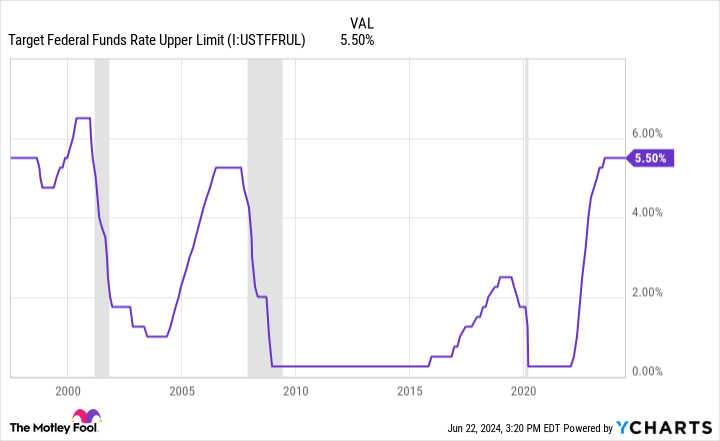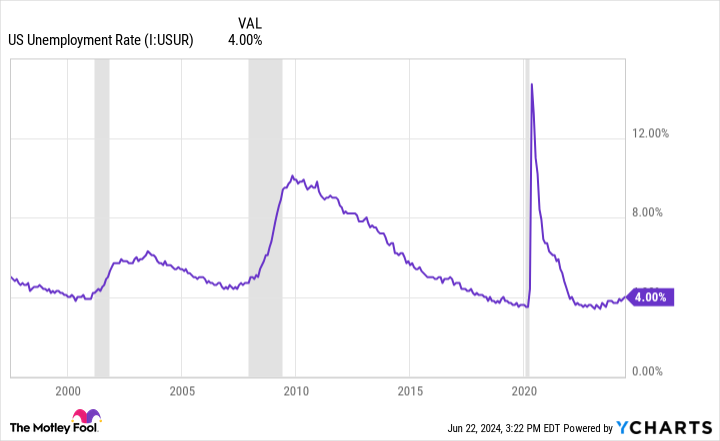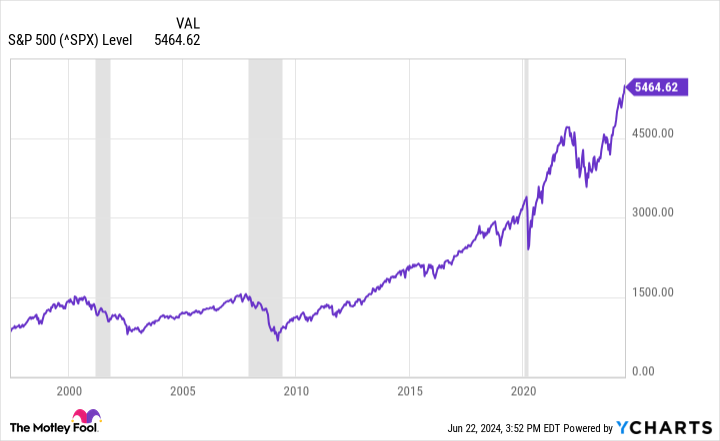News flash: The stock market is in trouble. That might seem hard to believe, with the stock market making record highs. Yet below the surface, I’m convinced that trouble is brewing.
For instance, the S&P 500 is up about 15% this year, but about 40% of its components are down year to date. In other words, big winners like Nvidia and Broadcom are carrying the index higher, even after accounting for many big losers like Intel and Lululemon.
Nevertheless, I’m still bullish on the stock market. Let me explain why.
Reasons for concern
First things first: There are plenty of ominous signs beyond the stock market’s lack of breadth.
Black cats on the floor of the New York Stock Exchange? Ravens circling the Nasdaq? No, the concerning signs I’m seeing are economic indicators — and they’re looking more alarming by the day.
Consider the relationship between interest rates and stock market corrections. Many people think that high interest rates lead to stock market corrections — or stock market crashes.
There’s some evidence to back that up. However, even more than high interest rates, stock market corrections seem to follow the first interest rate cut. This is because a rate cut is often seen as a sign that the economy is slowing or contracting, which can lead to a decrease in corporate profits and a subsequent drop in stock prices.
While the Fed has yet to start cutting interest rates, it has signaled that cuts are on the way. Moreover, several other central banks, including those in Canada and the European Union, have started cutting their benchmark rates.
The second alarming sign for the stock market is the unemployment rate. It’s starting to move higher.
That’s not just bad news for the people who have lost work; it’s a sign the economy is slowing. What’s more, the unemployment rate is rising from a multi-decade low. This could spell serious trouble for the stock market, as extended periods of ultra-low unemployment are often followed by deep recessions that stunt corporate earnings and lead to steep stock market sell-offs.
Last, the largest segment of the economy — the consumer — is finally showing signs of weakening. For years, strong consumer spending has kept the U.S. economy humming, even as high inflation took its toll. However, there are now signs that the consumer is crying uncle. Retail sales are sluggish; some months show year-over-year declines as consumers pull back from discretionary purchases.
Meanwhile, more consumers aren’t making loan payments on time. Credit card delinquencies have hit their highest level in over a decade, and auto delinquencies are also spiking. This could prove to be yet another tripwire for the stock market, as consumer spending accounts for about 70% of U.S. economic activity.
What’s the plan if the stock market is on the verge of a correction?
While all these signs point to a stock market correction, there’s no need for investors to panic. Indeed, selling would be the wrong thing to do.
That’s because economic indicators are not perfect. No model, forecast, or person can predict the future flawlessly. More to the point, trying to time the stock market doesn’t work. As Peter Lynch once said, “Far more money has been lost by investors trying to anticipate corrections than has been lost in all the corrections combined.”
Even if economic indicators were perfect in pointing out when stock market corrections were coming, investors would need to correctly time their reentry back into the stock market.
All of this is to say that it’s best to remain steady and unmoved by the stages of the economic cycle. Investors who keep their nerve and stay invested in the stock market not only save themselves tremendous stress; they tend to outperform those who try to time the market because they allow more time for their investments to grow through the power of compounding.
For example, during the 2008 financial crisis, the S&P 500 dropped by about 50%, but it recovered all of its losses within four years.
To sum up, storm clouds may be gathering. Yet for long-term investors, it all comes with the territory. A stock market correction — or worse — may arrive soon, or it might not. Either way, the best plan is to stick to a steady plan of saving and investment that uses the power of compounding to its advantage.
Should you invest $1,000 in S&P 500 Index right now?
Before you buy stock in S&P 500 Index, consider this:
The Motley Fool Stock Advisor analyst team just identified what they believe are the 10 best stocks for investors to buy now… and S&P 500 Index wasn’t one of them. The 10 stocks that made the cut could produce monster returns in the coming years.
Consider when Nvidia made this list on April 15, 2005… if you invested $1,000 at the time of our recommendation, you’d have $723,729!*
Stock Advisor provides investors with an easy-to-follow blueprint for success, including guidance on building a portfolio, regular updates from analysts, and two new stock picks each month. The Stock Advisor service has more than quadrupled the return of S&P 500 since 2002*.
*Stock Advisor returns as of June 24, 2024
Jake Lerch has positions in Lululemon Athletica and Nvidia. The Motley Fool has positions in and recommends Lululemon Athletica and Nvidia. The Motley Fool recommends Broadcom and Intel and recommends the following options: long January 2025 $45 calls on Intel and short August 2024 $35 calls on Intel. The Motley Fool has a disclosure policy.
The Stock Market Looks Like It’s About to Drop. Here’s Why I’m Still Buying. was originally published by The Motley Fool
Signup bonus from








